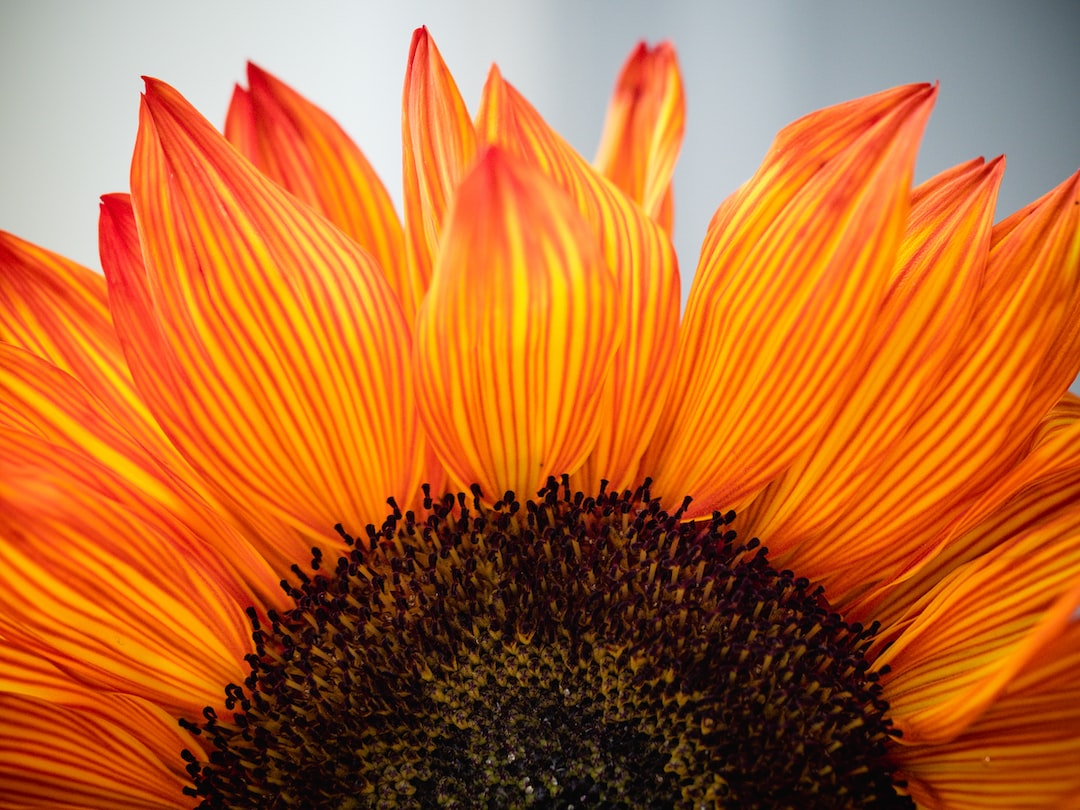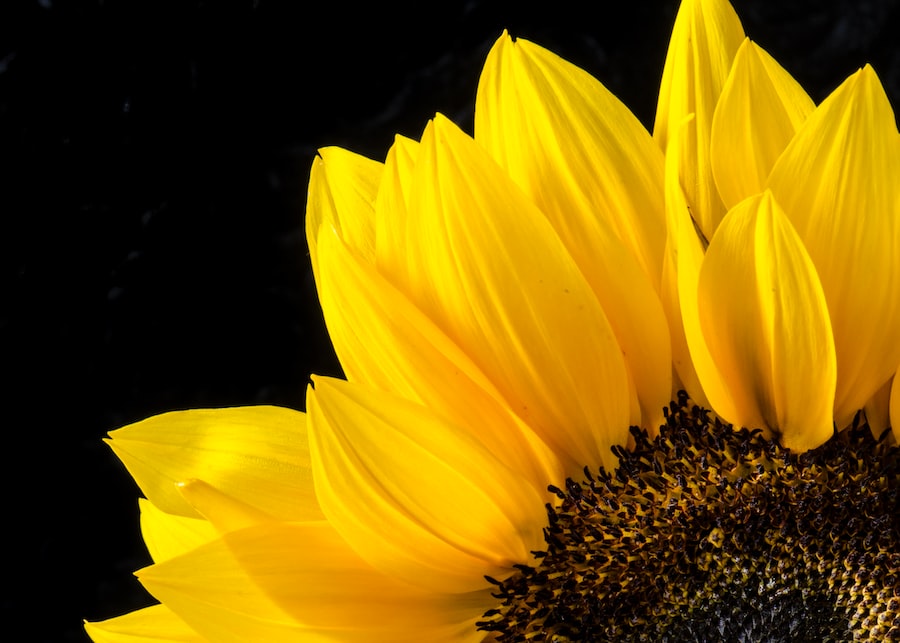Harvesting Sunflower Seeds: A Step-by-Step Guide to Collecting and Saving Seeds

Sunflower seeds are not only a delicious and nutritious snack, but they also have numerous health benefits. They are packed with essential nutrients such as vitamin E, magnesium, and selenium, which can help boost your immune system, improve heart health, and promote healthy skin. Additionally, sunflower seeds are a great source of healthy fats and protein, making them an excellent addition to any diet.
Harvesting sunflower seeds for personal use is a rewarding and cost-effective way to enjoy this nutritious snack. By growing your own sunflowers and harvesting the seeds, you have complete control over the quality and freshness of the seeds. You can also save money by avoiding the high prices of store-bought sunflower seeds.
Key Takeaways
- Harvesting sunflower seeds is important for both personal use and commercial purposes.
- The right time to harvest sunflower seeds is when the back of the flower head turns yellow and the seeds are plump.
- Preparing sunflower heads for harvesting involves cutting them off the stalk and removing excess debris.
- Manual and mechanical methods can both be used for harvesting sunflower seeds, but manual methods are more suitable for small-scale harvesting.
- Cleaning and drying sunflower seeds is crucial for storage and future use.
Choosing the Right Time to Harvest Sunflower Seeds
Knowing when to harvest sunflower seeds is crucial to ensure that they are fully mature and ready for consumption. One indicator that sunflower seeds are ready for harvest is when the back of the flower head turns yellow or brown. The petals of the flower will also start to dry out and fall off. Another sign is when the seeds start to loosen from the flower head and can be easily removed by rubbing them with your fingers.
In addition to these visual indicators, it is important to consider the weather conditions when choosing the right time to harvest sunflower seeds. It is best to wait until the weather is dry and sunny, as wet conditions can cause the seeds to mold or rot. Harvesting on a sunny day will also ensure that the seeds are fully dry before storing them.
Preparing the Sunflower Heads for Harvesting
Before harvesting sunflower seeds, there are a few steps you should take to prepare the flower heads. First, make sure that the flower heads are fully mature by checking for the indicators mentioned earlier. Once you have determined that they are ready for harvest, cut the flower heads from the stalk using a sharp knife or pruning shears.
After cutting the flower heads, remove any remaining petals and leaves from the back of the head. This can be done by gently rubbing the back of the head with your fingers or using a soft brush. Be careful not to damage the seeds in the process.
Harvesting Sunflower Seeds: Manual vs. Mechanical Methods
| Method | Time (hours/acre) | Seed Loss (%) | Cost (/acre) |
|---|---|---|---|
| Manual | 20-30 | 10-15 | 200-300 |
| Mechanical | 2-3 | 5-10 | 100-150 |
There are two main methods for harvesting sunflower seeds: manual and mechanical. Each method has its pros and cons, and the choice depends on your personal preference and the amount of seeds you need to harvest.
Manual harvesting involves removing the seeds from the flower heads by hand. This method is suitable for small-scale harvesting and allows for more control over the process. It also ensures that the seeds are not damaged during harvest. However, manual harvesting can be time-consuming and labor-intensive, especially if you have a large number of sunflowers.
Mechanical harvesting, on the other hand, involves using machinery to remove the seeds from the flower heads. This method is more efficient and time-saving, especially for large-scale harvesting. However, it may not be suitable for small-scale operations or home gardeners who do not have access to specialized equipment.
Cleaning and Drying Sunflower Seeds for Storage
After harvesting sunflower seeds, it is important to clean and dry them before storing them. Cleaning the seeds involves removing any debris or plant material that may be present. This can be done by placing the seeds in a bowl of water and stirring them around. The debris will float to the top, allowing you to skim it off.
Once the seeds are clean, they need to be dried thoroughly before storage. Spread them out in a single layer on a clean, dry surface such as a baking sheet or a mesh drying rack. Place them in a well-ventilated area away from direct sunlight and moisture. Stir or turn them occasionally to ensure even drying. The seeds are dry when they are hard and no longer pliable.
Storing Sunflower Seeds: Best Practices and Tips

Proper storage is essential to maintain the quality and freshness of sunflower seeds. When storing sunflower seeds, it is important to keep them in a cool, dry place away from sunlight and moisture. Airtight containers such as glass jars or plastic bags with ziplock seals are ideal for storing seeds.
It is also important to label the containers with the date of harvest to keep track of their freshness. Sunflower seeds can be stored for up to a year if stored properly. However, it is recommended to consume them within six months for the best flavor and nutritional value.
To extend the shelf life of sunflower seeds, you can store them in the refrigerator or freezer. This will help prevent the oils in the seeds from going rancid. Before using frozen sunflower seeds, allow them to thaw at room temperature to avoid condensation.
Using Sunflower Seeds for Food and Snacks
Sunflower seeds are incredibly versatile and can be used in a variety of ways in food and snacks. They can be eaten raw as a snack or added to salads, granola bars, trail mixes, and baked goods. They can also be ground into a paste or butter, similar to peanut butter, and used as a spread or ingredient in recipes.
Here are a few recipes that incorporate sunflower seeds:
1. Sunflower Seed Pesto: Blend sunflower seeds, garlic, basil, Parmesan cheese, olive oil, and lemon juice in a food processor until smooth. Use as a sauce for pasta or as a spread on sandwiches.
2. Sunflower Seed Energy Balls: Combine dates, sunflower seeds, oats, honey, and a pinch of salt in a food processor until well combined. Roll into small balls and refrigerate until firm.
3. Sunflower Seed Crusted Chicken: Dip chicken breasts in beaten egg, then coat with a mixture of ground sunflower seeds, breadcrumbs, and spices. Bake in the oven until golden and cooked through.
Planting Sunflower Seeds: Tips for Successful Germination
If you want to harvest your own sunflower seeds, you will need to start by planting them. Here are a few tips for successful germination:
1. Choose the right location: Sunflowers need full sun to thrive, so choose a location that receives at least six to eight hours of direct sunlight per day. The soil should be well-draining and fertile.
2. Prepare the soil: Before planting, loosen the soil and remove any weeds or debris. Add compost or organic matter to improve the soil’s fertility and drainage.
3. Plant the seeds: Plant the seeds about one inch deep and six inches apart. Water thoroughly after planting to ensure good seed-to-soil contact.
4. Water regularly: Sunflowers need regular watering, especially during dry periods. Water deeply once or twice a week, allowing the soil to dry out slightly between waterings.
5. Provide support: Depending on the variety, sunflowers can grow quite tall and may require support. Stake or cage the plants to prevent them from toppling over in strong winds.
Sunflower Seed Varieties: Which Ones to Choose for Harvesting
There are many different varieties of sunflowers, each with its own unique characteristics and seed size. When choosing sunflower seed varieties for harvesting, consider the following factors:
1. Seed size: Some varieties produce larger seeds, which are easier to harvest and shell. If you plan on using the seeds for snacking or cooking, choose varieties with larger seeds.
2. Flower size: Sunflowers come in various sizes, from dwarf varieties that grow only a few feet tall to giant varieties that can reach up to 12 feet in height. Consider the available space in your garden and choose a variety that fits your needs.
3. Pollen vs. pollen-free: Some sunflower varieties produce pollen, which can be messy and cause allergies in some people. If you prefer a cleaner and allergy-friendly option, choose a pollen-free variety.
4. Color: Sunflowers come in a range of colors, including yellow, orange, red, and even bi-colored varieties. Choose a color that appeals to you and complements your garden or landscape.
Enjoying the Fruits of Your Harvesting Labor
Harvesting sunflower seeds is a rewarding and enjoyable process that allows you to enjoy the fruits of your labor. By growing your own sunflowers and harvesting the seeds, you have complete control over the quality and freshness of the seeds. You can also save money by avoiding the high prices of store-bought sunflower seeds.
Whether you choose to harvest sunflower seeds manually or mechanically, it is important to clean and dry them thoroughly before storing them. Proper storage in a cool, dry place will help maintain their quality and freshness for an extended period.
Once you have harvested and stored your sunflower seeds, you can enjoy them in a variety of ways. From snacking on them raw to incorporating them into recipes, sunflower seeds are a versatile ingredient that adds flavor and nutrition to any dish.
So why not give it a try? Plant some sunflowers, harvest the seeds, and enjoy the benefits of this nutritious and delicious snack. Happy harvesting!
If you’re interested in learning how to get seeds from a sunflower, you might find this article from Lawn World helpful. They provide a step-by-step guide on how to harvest sunflower seeds, ensuring you can enjoy the fruits of your labor. Check out their comprehensive guide here for all the information you need to successfully collect and store sunflower seeds.
FAQs
What is a sunflower?
A sunflower is a tall plant with a large, yellow flower head. It is native to North America but is now grown all over the world for its seeds and oil.
Why would I want to get seeds from a sunflower?
Sunflower seeds are a nutritious snack and can also be used to grow more sunflowers. They are high in protein, healthy fats, and vitamins.
When is the best time to harvest sunflower seeds?
The best time to harvest sunflower seeds is when the flower head has turned brown and the back of the head is yellow or brown. This usually happens in late summer or early fall.
How do I harvest sunflower seeds?
To harvest sunflower seeds, cut the flower head off the plant and hang it upside down in a dry, well-ventilated area. Once the flower head is completely dry, rub the seeds off with your hands or a fork.
Can I eat sunflower seeds straight from the flower?
No, you cannot eat sunflower seeds straight from the flower. The seeds need to be dried and roasted before they are safe to eat.
How do I roast sunflower seeds?
To roast sunflower seeds, spread them out on a baking sheet and bake them in the oven at 350°F for 15-20 minutes, stirring occasionally. You can also roast them in a dry skillet on the stove over medium heat, stirring constantly, for 5-10 minutes.



